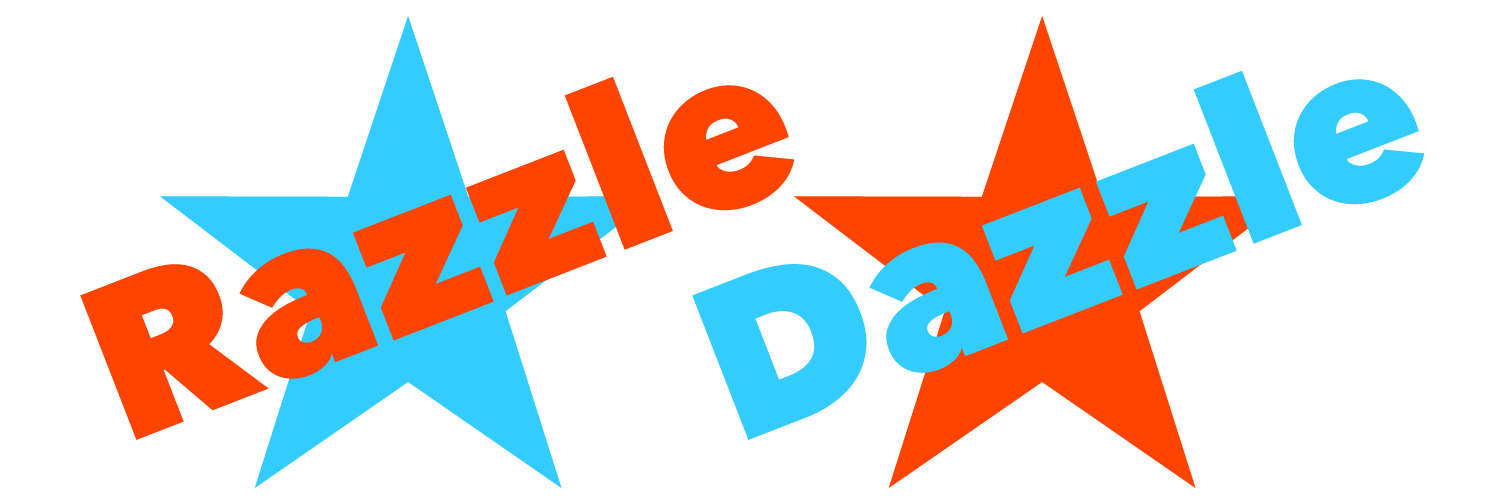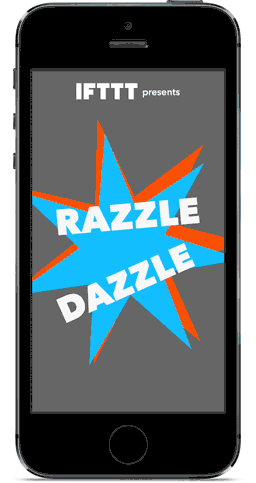RazzleDazzle 0.1.5
| TestsTested | ✓ |
| LangLanguage | SwiftSwift |
| License | MIT |
| ReleasedLast Release | Nov 2016 |
| SwiftSwift Version | 3.0 |
| SPMSupports SPM | ✗ |
Maintained by Max Meyers.
RazzleDazzle 0.1.5
- By
- Laura Skelton, Max Meyers and Devin Foley
- IFTTT
RazzleDazzle is a simple AutoLayout-friendly keyframe animation framework for iOS, written in Swift. Perfect for scrolling app intros.
RazzleDazzle grew from JazzHands, an Objective-C scrolling keyframe animations library by IFTTT.
JazzHands is used extensively in IF and DO for iPhone and iPad, most famously in the app intro.
What’s RazzleDazzle for?
Scrolling App Intro Animations
RazzleDazzle is the easiest way to add scrollview-powered animations to the app intro of your Swift app. If you’re adding a scrolling intro to your Objective-C app, check out JazzHands!
For some examples of how JazzHands and RazzleDazzle can be used in practice, check out the intros of both IF and DO for iPhone and iPad, as well as the scrolling animations of the buttons in the DO apps by IFTTT.
Easy Paging Scrollview Layouts in an AutoLayout World
RazzleDazzle’s keep(view: onPage:) function of the AnimatedPagingScrollViewController is a super easy way to lay out a paging scroll view that does what you expect it to when your app is rotated or used in the new split-screen iPad views of iOS9, a notoriously tricky aspect of getting your apps fully AutoLayout-ready. RazzleDazzle sets up an AutoLayout-friendly paging scroll view controller for you, and all you need to do to make your layout respond properly to any view size changes is tell RazzleDazzle which page you’d like things on.
As a bonus, because it’s built on top of the animations library, you can even tell RazzleDazzle that you’d like one of your views to show up on multiple pages while other views scroll past, with a single call to keep(view: onPages:).
Demo App
Open Example/RazzleDazzle.xcworkspace and run RazzleDazzleDemo to see a simple demonstration of moving, scaling, fading, and transforming views in a scrolling app intro.
Usage
Animated Paging Scroll Views
First, import RazzleDazzle into your view controller, and subclass AnimatedPagingScrollViewController.
import RazzleDazzle
class ViewController: AnimatedPagingScrollViewController {Tell the paging scroll view controller how many pages it should have.
override func numberOfPages() -> Int {
return 4
}Add any views you want to animate to the scrollview’s contentView on viewDidLoad.
override func viewDidLoad() {
super.viewDidLoad()
contentView.addSubview(firstLabel)
}Add your desired vertical position and size constraints to your views.
contentView.addConstraint(NSLayoutConstraint(item: firstLabel, attribute: .CenterY, relatedBy: .Equal, toItem: contentView, attribute: .CenterY, multiplier: 1, constant: 0))Tell the animated paging scroll view controller to keep the view on the page you want it to stay on.
keepView(firstLabel, onPage: 1)You can even tell the animated paging scroll view controller to keep the view still on more than one page, while other views scroll past it.
keepView(firstLabel, onPages: [1,2])Or offset the view’s center from the page’s center:
keepView(firstLabel, onPage: 1.25)Just make sure that if you’re using any of the keepView functions that you don’t set an x-position NSLayoutConstraint on the view, as it will conflict with the animated x-position constraints generated by RazzleDazzle.
RazzleDazzle Animations
Generally, creating animations in RazzleDazzle works similarly to creating animations in JazzHands. First, import RazzleDazzle into your view controller.
import RazzleDazzleThen, create an Animator to manage all of the animations in this UIViewController.
var animator = Animator()Create an animation for a view that you want to animate. There are multiple types of animation that can be applied to a view. For this example, we’ll use AlphaAnimation, which fades a view in and out.
let alphaAnimation = AlphaAnimation(view: viewThatYouWantToAnimate)Register the animation with the animator.
animator.addAnimation(alphaAnimation)Add some keyframes to the animation. Let’s fade this view out between times 30 and 60.
alphaAnimation[30] = 1
alphaAnimation[60] = 0Now, to animate the view, tell the animator what time it is. For example, to tie this animation to a UIScrollView, notify the animator of time in the scroller’s delegate method.
func scrollViewDidScroll(_ scrollView: UIScrollView) {
animator.animate(scrollView.contentOffset.x)
}This will produce an effect where the view will be fully faded in and visible for scroll positions 0 to 30. Between scroll positions 30 and 60, the view will fade out to be invisible, and it will stay faded out for scroll positions greater than 60.
Animation Types
RazzleDazzle supports several types of animations:
- AlphaAnimation animates the
alphaproperty (creates fade effects). - BackgroundColorAnimation animates the
backgroundColorproperty. - RotationAnimation animates a rotation transform (for rotation effects).
- ScaleAnimation applies a scaling transform (to scale view sizes).
- TranslationAnimation applies a translation transform (to translate view position).
- CornerRadiusAnimation animates the
layer.cornerRadiusproperty. - HideAnimation animates the
hiddenproperty (hides and shows views). - LayerStrokeStartAnimation animates the
strokeStartproperty of aCAShapeLayer(does not work with LayerStrokeEndAnimation). - LayerStrokeEndAnimation animates the
strokeEndproperty of aCAShapeLayer(does not work with LayerStrokeStartAnimation). - LayerFillColorAnimation animates the
fillColorproperty of aCAShapeLayer. - LayerStrokeColorAnimation animates the
strokeColorproperty of aCAShapeLayer. - PathPositionAnimation animates the
layer.positionproperty of aUIViewalong a path. - LabelTextColorAnimation animates the
textColorproperty of aUILabel. - ConstraintConstantAnimation animates an
AutoLayoutconstraint constant. - ConstraintMultiplierAnimation animates an
AutoLayoutconstraint constant as a multiple of an attribute of another view (to offset or resize views based on another view’s size) - ScrollViewPageConstraintAnimation animates an
AutoLayoutconstraint constant to place a view on a scroll view page (to position views on a scrollView using AutoLayout). This is the animation doing the heavy lifting forAnimatedPagingScrollViewController’skeepView(view: onPage:)function.
Creating Custom Animation Types
RazzleDazzle is easy to extend by creating your own custom animation types!
Custom Animation Types
To create your own custom animation type, your type needs to conform to the Animatable protocol. All this requires is that you implement an animate(time:) function that takes a CGFloat time value and does something with it.
For most custom animations, you’ll want to subclass Animation with the specific type of the property you want to interpolate for each keyframe.
public class BorderWidthAnimation : Animation<CGFloat>, Animatable {Create a property to store whatever view (or other object) you are applying the animations to, and create an initializer that takes a view as input.
private let view : UIView
public init(view: UIView) {
self.view = view
}Optionally, you can add a function to validate any input values that will be checked each time a keyframe is added, such as for Alpha values that must range from 0 to 1.
public override func validateValue(_ value: CGFloat) -> Bool {
return (value >= 0) && (value <= 1)
}Then, all you need to do is to make the appropriate changes to your view when the animate(time:) function is called.
public func animate(_ time: CGFloat) {
if !hasKeyframes() {return}
view.layer.borderWidth = self[time]
}You can then create an instance of your new Animation in your UIViewController, give it the view you’d like to animate, add it to your Animator and set some keyframes as above, and it will animate your custom property when the Animator is told to animate.
Interpolatable Types
RazzleDazzle can animate any type that conforms to the Interpolatable protocol. It comes pre-cooked to support animating CGFloats, CGPoints, CGSizes, CGRects, and UIColors.
If the property you’d like to animate is of a different type, just extend that type to conform to Interpolatable by adding a static function interpolateFrom(fromValue: toValue: withProgress:) that returns an instance of that type between two other instances of the same type.
extension CGPoint : Interpolatable {
public static func interpolateFrom(fromValue: CGPoint, to toValue: CGPoint, withProgress progress: CGFloat) -> CGPoint {
assert((0 <= progress) && (progress <= 1), "Progress must be between 0 and 1")
let interpolatedX = CGFloat.interpolateFrom(fromValue.x, to: toValue.x, withProgress: progress)
let interpolatedY = CGFloat.interpolateFrom(fromValue.y, to: toValue.y, withProgress: progress)
return CGPointMake(interpolatedX, interpolatedY)
}
}If your property is a CGFloat or one of the other built-in interpolatable types, you only need to create an animation type that tells RazzleDazzle how to apply the keyframe values to your view, as above.
Notes
An animator can only handle one animation per type per view. If you want multiple animations of the same type on a view, use keyframes of a single animation instead of two separate animations.
RazzleDazzle is written in Swift 3.0, so it will only compile in Xcode 8 and up. If you want to use a library like this that will integrate with an older version of Swift, you can use JazzHands, which is written in Objective-C, and use a bridging header to access the methods from your Swift 1.2 classes.
Looking for libraries to build awesome keyframe animations like RazzleDazzle on Android? Check out SparkleMotion.
Contributors
- Laura Skelton, creator.
Contributing
- Fork it ( https://github.com/[my-github-username]/RazzleDazzle/fork )
- Create your feature branch (
git checkout -b my-new-feature) - Commit your changes (
git commit -am 'Add some feature') - Push to the branch (
git push origin my-new-feature) - Create a new Pull Request
License
RazzleDazzle is available under the MIT license. See the LICENSE file for more info.
Copyright 2015 IFTTT Inc.


